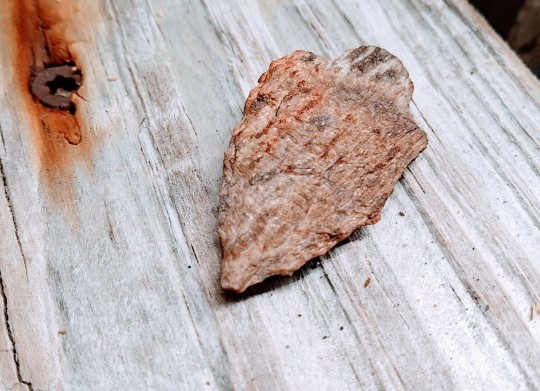#flint knapping
Text
youtube
How to make an Otzi the Iceman Flint Dagger
from Shawn Woods
80 notes
·
View notes
Text
Put some stone blades in a folding knife
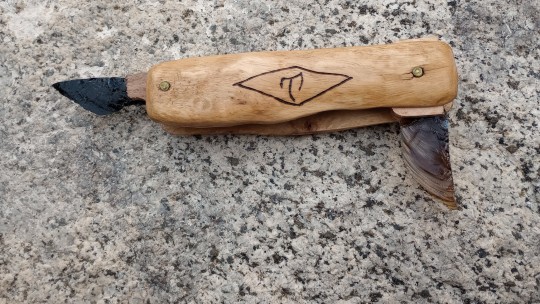
#art of bushcraft#outdoorlife#outdoors#bushcraft#my art#ways of old#art#flint knapping#knapped knives#folding knife
61 notes
·
View notes
Text
I made a thing:

It's not particularly meaningful archaeologically, but it turned out pretty.
Made of colored decorator glass from the dollar store. Rough work done with a smallish quartzite (?) hammer stone. Pressure flaked and notched with modern steel nails.
Cheating, I know, but I figure it hardly matters given the material...
Also it turns out modern industrial glass is incredibly difficult to flake with antler tools. It's no surprise that the people who flaked bottle glass preferred iron pressure flaking tools.
Anyway, toolstone costs a lot and decorative sea glass costs 1.50$ a bag at the dollar store, so I figured I'd do some practice and make pretty colored points.
(and the bases of drinking glasses I broke over the winter cost nothing, so stay tuned to see if I can make anything interesting out of those...)
93 notes
·
View notes
Text

chocolate flint uwu

there is like 60 flakes in this pile but I can fit them all in my hand, they're so tiny
i started working on these in my spare time (u nrelated to my thesis)
9 notes
·
View notes
Text

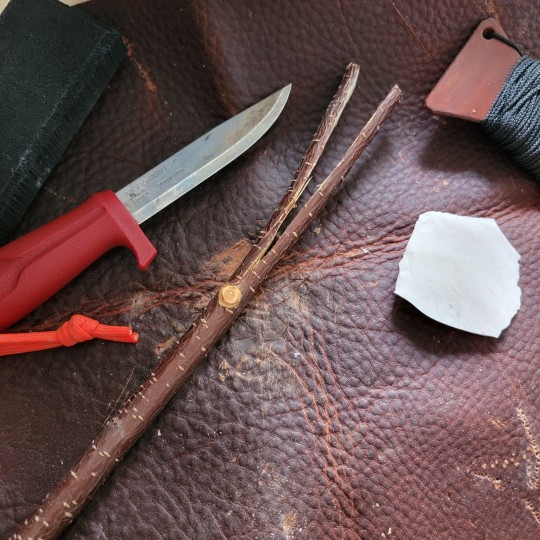


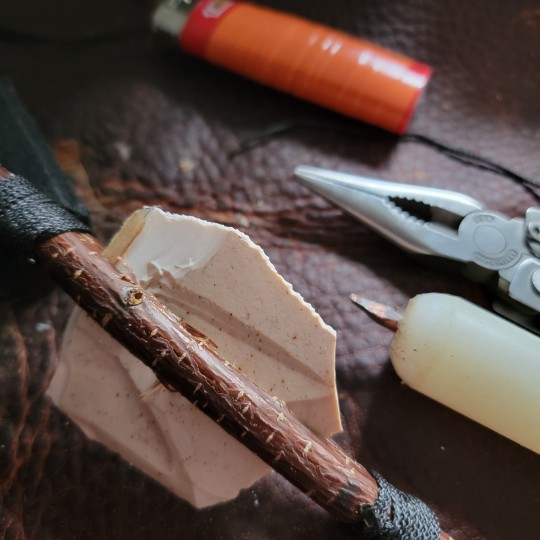

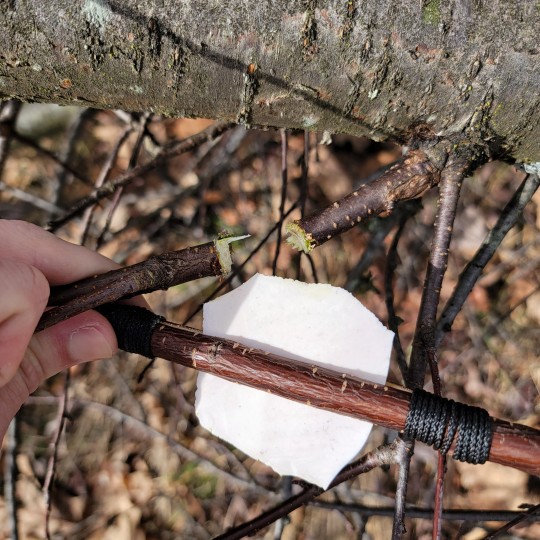

Making rock into tools
13 notes
·
View notes
Text
Flint knapping and practical magic
Now that we have discussed the basics of history and properties of flint, how can flint knapping be used in practical magic?
First, a few disclaimers:
1. Please do not try this indoors, without proper protective equipment
2. You will need some thick gloves- leather or gardening gloves that are designed to prevent cuts.
3. Protective eye gear is essential, especially when you're learning (which I'll admit I still am)
4. A thick towel on your lap will help prevent you bruising your legs as you work (I have done that before)
5. I am not an expert, this is just me sharing why I think more people should learn about flint knapping and magic. Please watch more detailed tutorials before attempting anything. It evolves sharp edges and the possibility to accidentally start a fire if you do it wrong.
That being said, hopefully I haven't scared too many people off. I am not a dextrous person myself and I have managed to do some rudimentary knapping, I even created a flint crow statuette. The tools that you can make can be extremely useful for Witchcraft, a handaxe for example can be used as an alternative to a ceremonial dagger. I use my flint tools for wood carving, simple stuff like creating touchwoods and small things. Another use if you're an artist is as a charmed pencil sharpener, to add some intention and protection from your ancestors into your work. But I am getting ahead of myself
How to find flint
Finding flint depends on your geographical location. For me, i collect flint from my family home in the east of England. East anglia is rich in flint and chalk as well as clay, anywhere you go you will find big chunks of flint on the ground. Look up your local area's geological background and this will help determine where you can find flint- in volcanic areas you are more likely to find obsidian than flint! Which is very cool, I'm jealous of you. The beach, however, is generally the best place to start wherever you are:
Look for large grey or white stones, flint generally has a coating of sedimentary rock.

It is especially fun to look for rocks with cracks down the middle that go all the way around- as they often have deposits inside. If you're not sure if it's flint, you can hit it with another rock on the beach (another HARD one, using chalk or sedimentary rocks will just break the chalk open.) And if it is flint it will shatter into pieces. Again please be careful. I like to chuck them a good deal away to open them up, and let gravity do the work when it hits other stones. A newly opened egde will look something like this:


The usual shine of flint tends to mattify on a fresh edge, but it still very smooth. When flint is being used as a brick to build a wall, this is as far as knapping goes. But for someone trying to make tools, you need to break it up again into smaller pieces.
For me, I just like breaking stones apart. I find it very therapeutic apart from the magickal elements. There is, however, something unquestionably magical about sitting outside and breaking open a stone, slowly learning with the gentle and rusty hand that a child in the stone age might have had. When I first did this, after watching an episode of digging for Britain, I had the genuine feeling that the people of the past were guiding my hands, teaching me how to work. It is an excellent, practical way to get closer to your ancestors during ancestor work.
I don't tend to worship my ancestors, but I do certainly lean on some of them for advice and guidance in times of strife.
Anyway, when you have a piece like this

On the further edge you can see that there are jagged edges where it has been knapped unevenly. This is a good way to get a sharp edge: you tap with another rock that is roughly the shape of your hand several times and eventually the flint will give. Here it broke into three pieces:

The iron deposits make this rock a slightly unusual one, but the principal applies for any piece of flint. Here it is especially important to be careful and wear gloves (in the picture I'm not wearing gloves because I'm a dumb dumb who cut my hand after this).
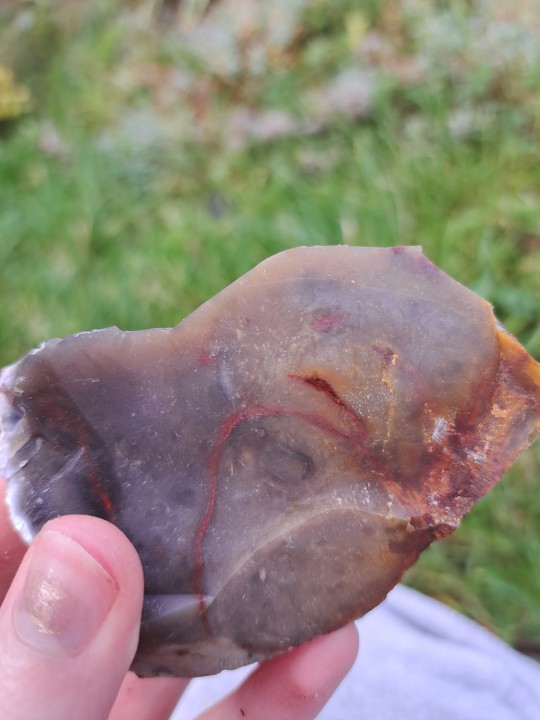

This piece is essentially a knife. You can see the slightly transparent edge, serrated. Generally an antler or bone would be used to shape this piece further. (I used chewed up antlers from the family dog)
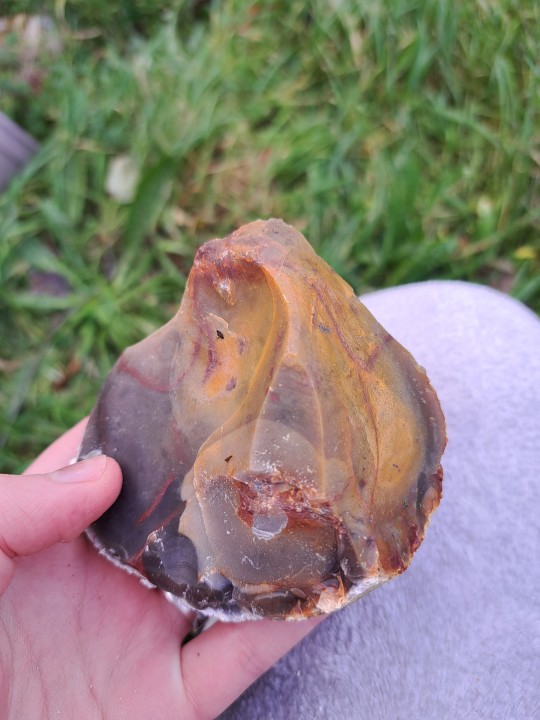
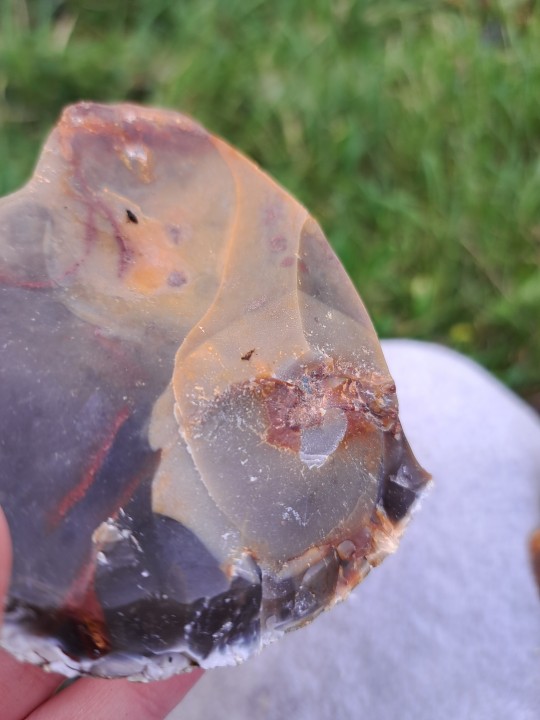

You can see on the picture to the left there are cracks running down the larger piece. You can carefully remove a smaller piece from the larger by hitting it a few times with the same rounded stone, acting as your hammer. Here a piece came off that could be easily shaped into an arrowhead.
Laver flakes are created by hitting a larger piece precisely until a small, sharp flake falls off. These are difficult to do for beginners. Most of these sharp pieces shown are now on my altar, to add protection to the space and connection to my ancestors. Razor sharp small flakes have a tenancy to fall off, I collect these in a jar and use them for spell bags and jars. It is important to not leave them on the floor anywhere where pets walk, as they will cut into their feet. (And yours if you have a habit of walking barefoot in your garden/outside).
The best part about flint knapping in magical practice is that it's entirely free. Like I've said before, some of the best magical tools come not from commercialised stores but through your own practice and historical techniques that never required buying materials. Go forth and Forage, my flintlings.
For more information and a more detailed guide on things I can't do, check out this website:
https://exarc.net/issue-2016-3/at/recycled-flint-cores-teaching-tools-flintknapping-archaeological-open-air-museums
This YouTube video is also helpful:
Wessex archaeology flint knapping basics
11 notes
·
View notes
Text

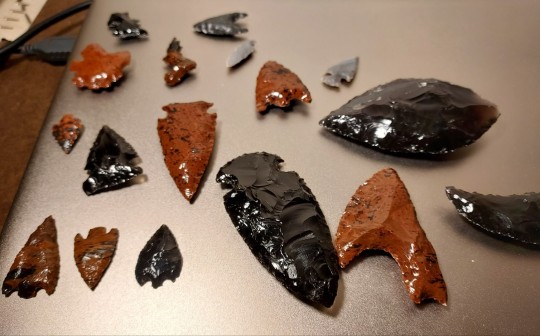
Full collection of finished pieces (to date)
Large ovaloid one in the top righthand corner needs work however.
4 notes
·
View notes
Text
youtube
#copper jewelry#copper patina#patina#patina on copper#copper oxide#arrowhead#flint knapping#green copper#blue copper#black patina#blue patina#green patina#Youtube
1 note
·
View note
Text
HIDDEN MIDDEN
“Why then you’re as mad as me. No, madder. For I distrust ‘reality’ and its moron mother, the universe, while you fasten your innocence to fallible devices which pretend at happy endings.” ― Author Ray Bradbury
“Tis the Season,” for anhedonia that is. DSM-5 defines it thusly, “…markedly decreased interest or pleasure in almost all activities.” This does not include getting bored with one thing…

View On WordPress
#anhedonia#big media#capitalism#christmas#cognitive dissonance#exchange value#flint knapping#Hierarchy of needs#ikigai#madness#meaning#midden#raison d’être#sadness#symbolism#tis the season#use value#video gaming#winter
0 notes
Text
0 notes
Text
Got a good knap in this morning
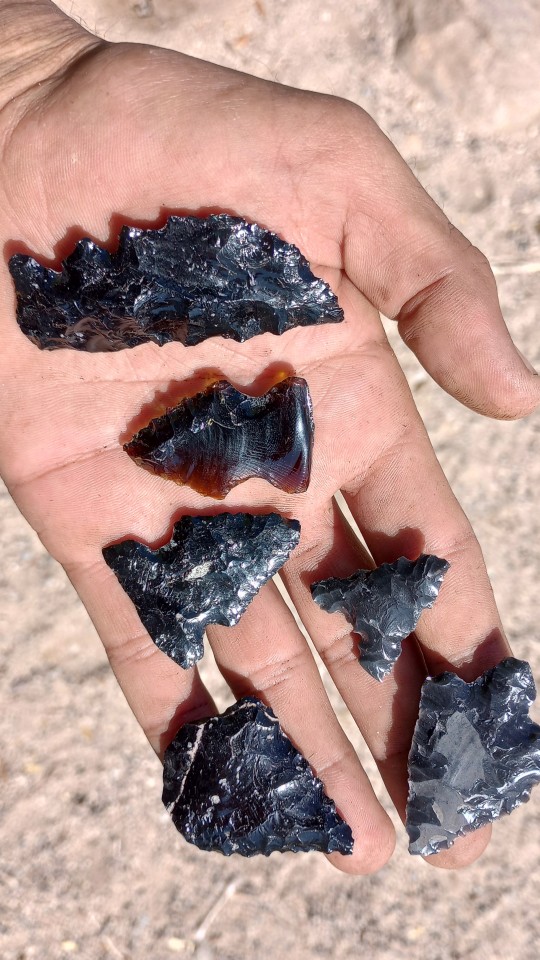
#stonework#stone tools#projectile points#outdoorlife#outdoors#ways of survival#ways of old#knowledge is the best survival gear#flint knapping#art#bushcraft#art of bushcraft#my art
76 notes
·
View notes
Text
I made a (not great but still functional) denticulate knife today:


Depending on your perspective, I cheated by pressure flaking with a modern nail.
This summer I'll pick up some proper iron nails from the farm, but until then this thing works like a hot damn.
I've been working with modern glass some, so metal pressure flakers are kind of necessary.
Hopefully I'll have some toolkit pictures soon, plus some Very Shiny clear glass points.
14 notes
·
View notes
Text

it's just me and my flint tools against the world >_<
9 notes
·
View notes
Text
A beautiful and extremely unique folding glass bladed knife made by @thestonedknifeman
Truly a master of the craft.
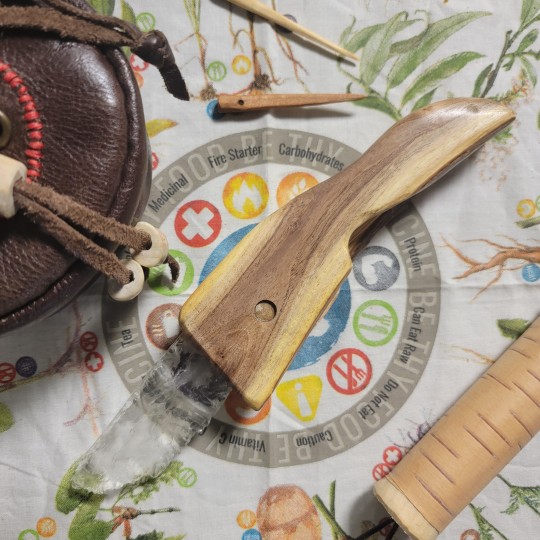


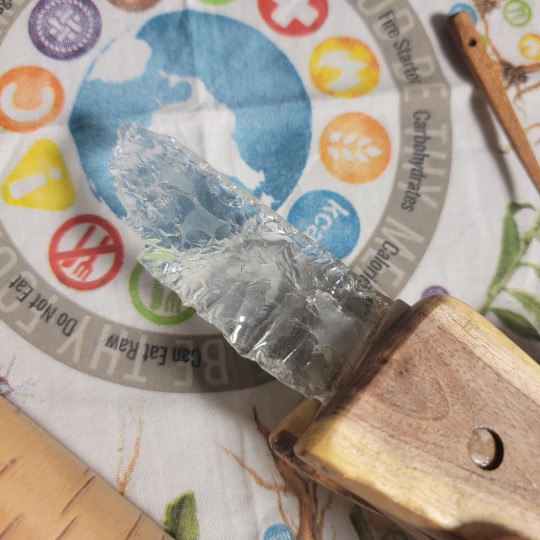
Thanks again friend, I'll be sure to treasure this one.
12 notes
·
View notes
Text
Hyperfixating on rocks--flint knapping, rock tumbling, rock hounding, rock identifying...


#I'm gonna get a flint knapping kit#not at all inspired by my archaeology class#nope not at all because I had to memorize a bazillion different kinds of stone tools#I want to get a rock tumbler#but I live in an apartment so I don't really have anywhere not-disruptive to put it#maybe I'll ask my grandparents if I can put it outside their woodshop
24 notes
·
View notes
